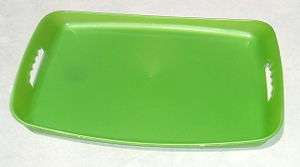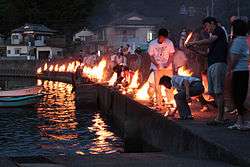盆
| ||||||||
Translingual
Han character
盆 (radical 108, 皿+4, 9 strokes, cangjie input 金尸竹廿 (CSHT), four-corner 80107, composition ⿱分皿)
References
- KangXi: page 793, character 5
- Dai Kanwa Jiten: character 22959
- Dae Jaweon: page 1208, character 7
- Hanyu Da Zidian: volume 4, page 2558, character 7
- Unihan data for U+76C6
Chinese
| simp. and trad. |
盆 | |
|---|---|---|
Glyph origin
| Historical forms of the character 盆 | ||
|---|---|---|
| Western Zhou | Shuowen Jiezi (compiled in Han) | Liushutong (compiled in Ming) |
| Bronze inscriptions | Small seal script | Transcribed ancient scripts |
 |
 |
 |
| Characters in the same phonetic series (分) (Zhengzhang, 2003) | |
|---|---|
| Old Chinese | |
| 扮 | *prɯːns, *hmroːlʔ, *pɯn, *pɯnʔ |
| 盼 | *pʰrɯːns |
| 頒 | *praːn, *bɯn |
| 朌 | *praːn, *bɯn |
| 鳻 | *praːn, *bɯn |
| 份 | *prɯn, *bɯns |
| 汃 | *pʰreːd, *prɯn |
| 玢 | *prɯn |
| 邠 | *prɯn |
| 攽 | *prɯn |
| 砏 | *prɯn, *pʰrɯn, *pʰɯn |
| 貧 | *brɯn |
| 湓 | *pʰɯːns, *bɯːn, *pʰɯns |
| 盆 | *bɯːn |
| 葐 | *bɯːn, *bɯn, *bɯn |
| 坌 | *bɯːns, *bɯnʔ, *bɯns |
| 坋 | *bɯːns, *bɯnʔ, *bɯns |
| 分 | *pɯn, *bɯns |
| 吩 | *pɯn |
| 粉 | *pɯnʔ |
| 黺 | *pɯnʔ |
| 芬 | *pʰɯn |
| 紛 | *pʰɯn |
| 衯 | *pʰɯn |
| 棻 | *pʰɯn, *bɯn |
| 氛 | *pʰɯn, *bɯn |
| 雰 | *pʰɯn |
| 忿 | *pʰɯnʔ, *pʰɯns, *bɯnʔ |
| 魵 | *pʰɯnʔ, *pʰɯns, *bɯn, *bɯnʔ |
| 汾 | *bɯn |
| 羒 | *bɯn |
| 枌 | *bɯn |
| 棼 | *bɯn |
| 妢 | *bɯn |
| 梤 | *bɯn |
| 馚 | *bɯn |
| 鼢 | *bɯn, *bɯnʔ |
| 蚡 | *bɯn, *bɯnʔ |
| 弅 | *bɯnʔ |
| 秎 | *bɯns |
Phono-semantic compound (形聲, OC *bɯːn) : phonetic 分 (OC *pɯn, *bɯns) + semantic 皿.
Pronunciation
Definitions
盆
Compounds
Japanese
Etymology 1

| Kanji in this term |
|---|
| 盆 |
| ぼん Grade: S |
| on’yomi |
From Middle Chinese 盆 (bwon). Compare modern Mandarin 盆 (pén).
Noun
- a tray (for carrying e.g. dishes)
- (archaic) a flat earthenware pot, bowl, or basin
- short for 盆茣蓙 (bon goza), a woven rush mat for rolling or throwing dice in gambling
- a gambling den, a place where gambling happens
- a gamble, a match, a contest
- a household, a residence, a home (by extension from the sense of having one's own serving tray)
- a place for a tryst
- the circular area of a 回り舞台 (mawari butai, “revolving stage”) (from its resemblance to a round serving tray)
Derived terms
Idioms
- 覆水盆に返らず (fukusui bon ni kaerazu): “spilt water does not return to the basin” → some things cannot be undone
- 盆を覆す (bon o kutsugaesu): “to knock over the pots” → said of heavy rain; compare raining pitchforks and hammer handles, raining cats and dogs
- 盆を傾ける (bon o katamukeru): “to make the pots lean over” → said of heavy rain; compare raining pitchforks and hammer handles, raining cats and dogs
- 盆に載せたる蟇 (bon ni nosetaru hikigaeru): “a toad placed on a tray” → a metaphor for being at a loss and unable to proceed, much as a toad on a tray will slip about and be unable to get traction
- 塗り盆に載せた蛙 (nuribon ni noseta kaeru): “a frog placed on a lacquered tray” → a metaphor for being at a loss and unable to proceed, much as a frog on a lacquered tray will slip about and be unable to get traction
- 塗り盆へ載せた蟇蛙 (nuribon e noseta hikigaeru): “a toad placed on a lacquered tray” → a metaphor for being at a loss and unable to proceed, much as a toad on a lacquered tray will slip about and be unable to get traction
- 盆を敷く (bon o shiku): “to lay the mats” → to start gambling; to establish one's own household
- 盆をひく (bon o hiku): “to lay the mats” → to start gambling; to establish one's own household
- 盆を戴きて天を望む (bon o itadakite ten o nozomu): “to look at the sky with a pot [or tray] on one's head” → a metaphor for two things that cannot be done at the same time, much as carrying a pot or tray on one's head would prevent one from looking up
Synonyms
Etymology 2

| Kanji in this term |
|---|
| 盆 |
| ぼん Grade: S |
| on’yomi |
Short for 盂蘭盆 (Urabon) or 盂蘭盆会 (Urabon'e), from Middle Chinese 盂蘭盆 (hju lan bwon) or 盂蘭盆會 (hju lan bwon hwajH) (compare modern Mandarin 盂蘭盆 (yúlánpén) or 盂蘭盆會/盂兰盆会 (yúlánpénhuì)), a transcription of Pali ullumpana (“raising, helping”), present participle of Pali verb ullumpati (“to raise up, to help”).
A number of Japanese dictionaries state that this term derives from Sanskrit उल्लम्बन (ullambana), purportedly meaning “hanging upside-down” in reference to the souls of the dead being tortured in hell by being strung up by their feet.[3][2][4][5] However, the Sanskrit word would be the present participle of verb उल्लम्ब् (ullamb, “to hang”, intransitive), with no inherent “upside-down” meaning.[6][7] Moreover, neither the purported meaning of “hanging upside-down” nor the verifiable meaning of “hanging” match very well, given that the urabon ceremonies are about helping the dead, closer in meaning to the “helping” sense of the Pali verb.[8] This suggests that explanations of the dead hanging upside-down in hell are more likely to be folk etymologies based on a mistaken connection to the Sanskrit verb, rather than a more direct semantic link to the Pali.
(Can this(+) etymology be sourced?)
Pronunciation
Proper noun
- the Obon or Bon Festival, an event with Buddhist roots, celebrated on July 15
Derived terms
- 盆踊り (Bon odori), 盆踊 (Bon Odori): a traditional dance performed at Obon
Idioms
- 盆と正月が一緒に来たよう (Bon to Shōgatsu ga issho ni kita yō): “as if Bon and New Years came together” → extremely busy; an overlap of multiple happy occasions
- 盆と正月が一時に来たよう (Bon to Shōgatsu ga ittoki ni kita yō): “as if Bon and New Years came at the same time” → extremely busy; an overlap of multiple happy occasions
- 盆の十六日は地獄の釜の蓋が開く (Bon no jūroku-nichi wa jigoku no kama no futa ga aku): “on the 16th day of Bon, the lids on the kettles of hell open up” → from a tradition that the 16th day of July (the day just after Obon) is a day of rest and relative peace for the souls of the damned, when the demons of hell temporarily let people off the hook, and employers in this world would give their employees a day off
- 盆過ぎての鯖商い (Bon sugite no saba akinai): “the mackerel business after Bon has finished” → a metaphor for something past its prime, from the way that grilled mackerel was often given as a gift food item or as an offering during Obon
- 盆過ぎての蓮の葉 (Bon sugite no hasu no ha): “a lotus leaf after Bon has finished” → a metaphor for something past its prime, from the way that lotus leaves would often be used in offerings during Obon
- 盆過ぎての蓮の花 (Bon sugite no hasu no hana): “a lotus blossom after Bon has finished” → a metaphor for something past its prime, from the way that lotus flowers would often be used in offerings during Obon
- 盆三日は嫁と姑が仲よくなる (Bon mikka wa yome to shūtome ga nakayoku naru): “brides and mothers-in-law (can) get along for the three days of Bon” → from how family and other guests come to visit during Obon; compare the famous Benjamin Franklin quote, “After three days men grow weary of a wench, a guest, and weather rainy.”
Synonyms
See also
- List of festivals in Japan on Wiktionary
- List of festivals in Japan on Wikipedia
Etymology 3
| Kanji in this term |
|---|
| 盆 |
| ぼに Grade: S |
| Irregular |
Alteration from bon, where the final moraic n changed to ni.[3][2] Compare the Japanese given name 紫苑 and the similar development of reading Shioni from Shion.
Obsolete reading.
Pronunciation
- IPA(key): [bo̞ɲ̟i]
References
- 1998, NHK日本語発音アクセント辞典 (NHK Japanese Pronunciation Accent Dictionary) (in Japanese), Tōkyō: NHK, →ISBN
- 2006, 大辞林 (Daijirin), Third Edition (in Japanese), Tōkyō: Sanseidō, →ISBN
- 1988, 国語大辞典(新装版) (Kokugo Dai Jiten, Revised Edition) (in Japanese), Tōkyō: Shogakukan
- 1995, 大辞泉 (Daijisen) (in Japanese), Tōkyō: Shogakukan, →ISBN
- 1997, 新明解国語辞典 (Shin Meikai Kokugo Jiten), Fifth Edition (in Japanese), Tōkyō: Sanseidō, →ISBN
- ullamb-related entries at SpokenSanskrit.org website
- ullamb entry at Sanskrit Dictionary website
- ulllumpana entry at The Pali Text Society's Pali-English Dictionary website
Korean
Hanja
盆 • (bun) (hangeul 분)
- This term needs a translation to English. Please help out and add a translation, then remove the text
{{rfdef}}.
Vietnamese
Han character
盆 (bồn)
- This term needs a translation to English. Please help out and add a translation, then remove the text
{{rfdef}}.
Readings
- Nôm: bòn, bồn, buồn, buồng
References
- Thiều Chửu : Hán Việt Tự Điển Hà Nội 1942
- Trần Văn Chánh: Từ Điển Hán Việt NXB Trẻ, Ho Chi Minh Ville, 1999
- Vũ Văn Kính: Đại Tự Điển Chữ Nôm, NXB Văn Nghệ, Ho Chi Minh Ville, 1999
